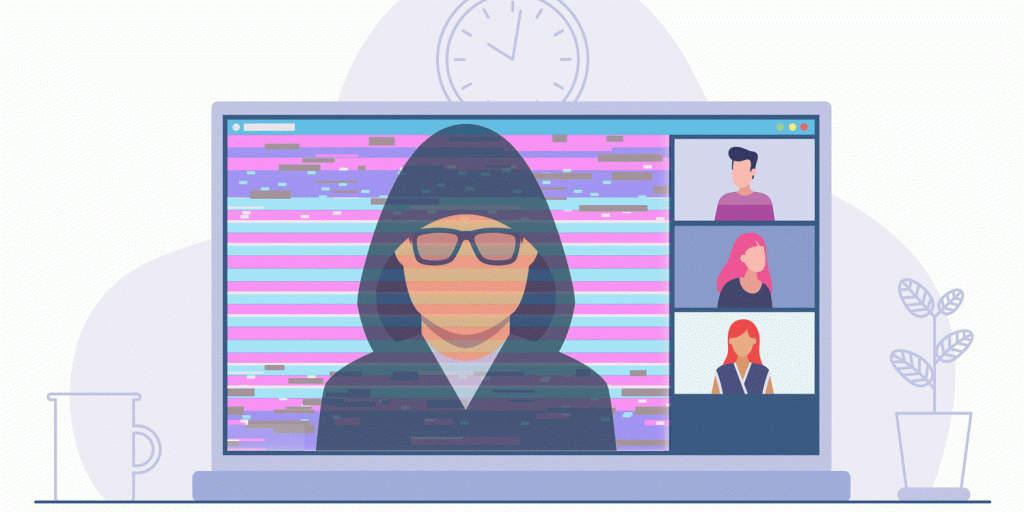'Zoombombing' Trolls Target Online Meetings at Universities, Schools, More

From an Alcoholics Anonymous meeting in California to a children’s book reading in New Jersey to a Unitarian Universalist Church service in Massachusetts, people across the country are finding that the virtual get-togethers so common during the coronavirus pandemic can attract unwanted guests.
In a new genre of Internet antagonism known as “Zoombombing,” named for the popular videoconferencing service, pranksters join online classes, meetings or social gatherings and bombard everyone with objectionable videos, racist epithets, loud music or even just distracting comments.
Higher education—and the University of Maryland—hasn’t been immune. Last week, a virtual session of the Nyumburu Cultural Center’s NewsBreak dialogue series was interrupted by racial slurs and pornography. That followed a widely publicized racist interruption of an online meeting of students, faculty and staff at the University of Texas at Austin in late March.
“We are living in challenging times, and to add racist attacks to the day-to-day issues we are already navigating is unthinkable,” said Georgina Dodge, UMD vice president for diversity and inclusion, in a message to the community, adding that her office is connecting Nyumburu leaders and students with the University of Maryland Police Department and Division of Information Technology.
Zoombombing has even caught the attention of the FBI, which is encouraging anyone who has experienced “teleconference hijacking” to report it to the agency’s Internet Crime Complaint Center.
The phenomenon is the collision of two factors, according to Jessica Vitak, associate professor in the College of Information Studies and director of the Center for the Advanced Study of Communities and Information: an exponential growth in the size and diversity of an app’s users and the ever-present reality of online trolls.
“(New Zoom users) might not have put a second thought to problems that could arise,” she said. “People need to put their energy somewhere and unfortunately some people think this is amusing.”
It’s another illustration of what scholars call the “online disinhibition effect,” Vitak said, wherein the anonymity of the Internet allows people to disconnect from their “real life” identity and engage in unruly behavior they otherwise wouldn’t.
The rise in security risks directly correlates to the skyrocketing growth at Zoom. Founder and CEO Eric S. Yuan wrote in an April 1 blog post that the number of daily users ballooned from 10 million in December to 200 million in March. The platform was built for big institutions with IT support, with designers unaware “that, in a matter of weeks, every person in the world would suddenly be working, studying, and socializing from home. We now have a much broader set of users who are utilizing our product in a myriad of unexpected ways, presenting us with challenges we did not anticipate.”
Zoom and similar apps face a balancing act in making sure security is adequate while remaining usable for broad audiences–and having data to sell to advertisers. The company recently hired former Facebook security chief Alex Stamos as an adviser, and announced that starting tomorrow, free users outside of China won’t have their video routed through that country and paying customers will be able to choose which data centers are used for their calls.
“In the end, trolls are always going to be trying to find those weaknesses,” Vitak said. “For users, the focus should be on mitigating those risks.”
The long-term challenge is that people are drawn to “click here and be ready to go,” she said, so technology scholars and the government need to focus on how to incentivize companies to be more proactive with security settings and make them easy to understand.
“That’s an uphill battle,” she said. “It’s really challenging as technology evolves faster than our ability to keep up with it and regulate it.”
Original article posted in Maryland Today